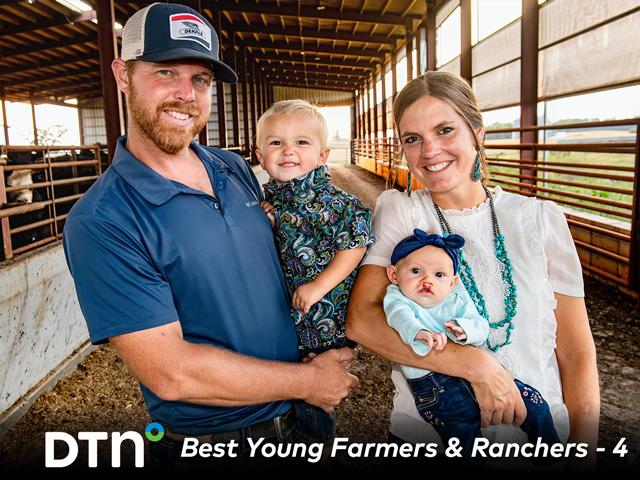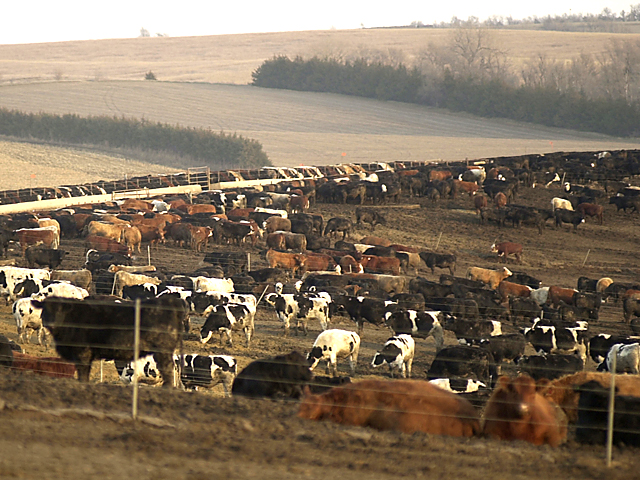Call the Market
Cattle Market Desperately Needs More Workers and Packing Capacity
Like many of you, I've spent many hours trying to pinpoint "why" the cattle market is in the state it's in. Currently, we have consumers who hunger for American beef and are being charged outrageous prices at the meat counter but continue to buy anyways. We have feedlots who are stomaching (barely) the expense of $7.00 corn and selling live cattle for less than $120, and we have a packing industry that's making an ungodly amount of money but continues to run processing speeds well below full capacity.
If that's not a signaling cue for market chaos, I don't know what is.
Last year at this time, we were watching the onset of COVID-19 crumble our world as we knew it. Packing plants were shutting down, boxed beef prices soared and there were as few as 20,000 head of cash cattle traded in one single week. At the time, going to work to monitor and interpret the markets felt like walking into a battlefield, not knowing what landmine was going to go off next and how the pieces would be picked up afterwards. At least last year we had something to blame, we had something to point our finger at and understood why the mass hysteria was breaking out, but today ... where do we point the blame?
Analysts look at the market through numbers and data to draw conclusions while cattlemen look at their own operations, see the challenges they face and try to draw conclusions. Meanwhile, feedlots carefully pencil feed costs, as if they were weighing liquid gold instead of corn, and they, too, try to draw conclusions.
Truth be told, this industry has endured a slow deterioration of equity, leverage and profitability over the last decade and the wrath of the creeping lion has finally cost enough producers enough money that the blatant problems lying within the market cannot be tolerated or overlooked anymore.
Last Friday (May 7), when choice cuts throughout the week averaged $11.72 more than the week before and select cuts averaged $7.56 more than the week before -- but the week's slaughter was only estimated at 638,000 head -- I was infuriated. Shouldn't the market follow the simple laws of supply and demand? Shouldn't packers want to process more cattle if there's money to be made?
P[L1] D[0x0] M[300x250] OOP[F] ADUNIT[] T[]
I discussed the matter with DTN's Lead Analyst, Todd Hultman, who summarized the cattle market's situation best. He said, "The problem, as analysts, is that we look at the markets as if they are all competitive, but the cattle market is not functioning as a competitive market. If packers had competition, they would be more eager to deliver beef to the market, trying to get there before the next guy beat them to it, but that is not what we see. Packers are content to deliver beef slowly and protect their margins, knowing there's no one else to take their place; they have nothing to lose."
As painful as it might be to accept, he's absolutely right. Packers don't have competition; therefore, their job -- in order to make as much money as possible (as every business wishes to do) -- is to limit supply to drive up prices.
Still, I needed to know more. Even if packers were only controlling the supply side of the market to increase box prices and ultimately create more revenue, why weren't they putting some of that meat away in cold storage and safeguarding themselves for later down the road when fed cattle supplies run noticeably tighter?
I reached out to Trey Wasserburger, who needs no introduction to the cattle market. Wasserburger holds a unique position in the cattle industry, as he's lived and breathed the headache that so many of us share, but he's gone the extra mile and refused to become a victim to the market as it operates today. Alongside his wife, Dayna, and their four children, the Wasserburger family successfully manages a seedstock operation south of North Platte, Nebraska, and are leading the charge to break ground on a new packing plant, soon to be known as the Sustainable Beef Packing Plant.
Trey has not only fought the battle as a cattleman himself, but he's now changing the industry by adding more packing capacity, which is something that the industry has desperately longed for.
Knowing that he wouldn't bat an eye at calling a spade a spade, and he wouldn't think twice about calling the industry out where work needed to be done, I ran my questions by him, ranging from, "how much has social-distancing in plants truly affected capacity levels," to the biggest and most unbridled questions of, "what do we do to change the market as it's operating today?"
He started by addressing my question about packers running well below full capacity, even though choice cuts are well above $3.00. He said, "The biggest problem that the packing industry currently faces is that they can't find help. It used to be that packers would fire employees on the spot at their first offense at missing without notice. Today, packers have to allow employees to come back, even if they've missed work, because they need the workers."
Trey later went on to say, "More and more plants are trying to use cameras and automation to alleviate their dependance on workers, but the fact remains that a seasoned employee who knows how to properly cut product and can adjust his/her eye to make better cuts can easily earn the plant upwards of 1% more. Right now, if packers run a full schedule and run an aggressive Saturday kill, workers won't show up on Monday. Packers want to make all the money the market has to offer, but their hands are tied right now as they can't find enough help. More than anything, we need to get people back to work and we need to be processing more cattle."
According to Steve Kay of Cattle Buyers Weekly, the U.S. capacity is 128,430 head per day or 706,365 head per week using a five-and-a-half-day work week. Social distancing in plants is anticipated to limit production by roughly 2% to 3% weekly. Using Steve Kay's capacity figure of 706,365 head per week and calculating a loss of 2% to 3%, U.S. packing plants should still be able to process close to 685,175 to 692,238 head a week while under social distancing restraints. Last week's slaughter is only estimated at a mere 638,000 head; that's 47,175 to 54,238 head less than what the market could be seeing processed.
The cattle market has seen challenges arise from every front imaginable and then some more. Packers need workers to process cattle; feedlots need to see more packing capacity added to the market to help drive stronger prices in the cash market, and consumers need to be served the product they yearn for.
I'm convinced these industry problems won't become matters of the past until more packing capacity is added to the beef sector and employees return to work.
ShayLe Stewart can be reached at ShayLe.Stewart@dtn.com
(c) Copyright 2021 DTN, LLC. All rights reserved.




